#National University of Singapore
Text
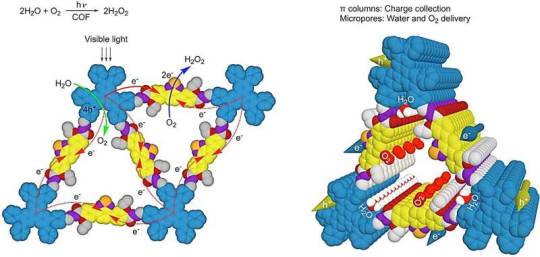
Researchers develop novel method to photosynthesize hydrogen peroxide using water and air
Researchers at the National University of Singapore (NUS) have developed a microporous covalent organic framework with dense donor–acceptor lattices and engineered linkages for the efficient and clean production of hydrogen peroxide (H2O2) through the photosynthesis process with water and air.
Traditional industrial production of H2O2 via the anthraquinone process using hydrogen and oxygen is highly energy-intensive. This approach employs toxic solvents and expensive noble-metal catalysts and generates substantial waste from side reactions.
In contrast, photocatalytic production of H2O2 from oxygen and water offers an energy-efficient, mild, and clean route. Most importantly, it addresses the common drawbacks of existing photocatalytic systems, such as low activity, heavy use of additional alcohol sacrificial donors, and the necessity for pure oxygen gas input.
Read more.
#Materials Science#Science#Hydrogen peroxide#Materials synthesis#Covalent organic framework#COF#National University of Singapore
14 notes
·
View notes
Text
Imagine being able to generate electricity by harnessing moisture in the air around you with just everyday items like sea salt and a piece of fabric.
That’s just what a team of researchers from Singapore has shown, having developed a moisture-driven battery made of a thin layer of fabric, sea salt, carbon ink, and a special water-absorbing gel.
About 0.3 millimeters in thickness, the moisture-driven electricity generation device, or MEG, is built upon the ability of different materials to generate electricity from the interaction with moisture in the air, and could potentially fit a wide range of real-world applications, including wearable electronics like health monitors, electronic skin sensors, and information storage devices.
Such devices have already been developed, but face major challenges with balancing and maintaining moisture content between where it shouldn’t be and where it needs to be.
Now, a research team led by Assistant Professor Tan Swee Ching from the National University of Singapore’s Department of Materials Science and Engineering have devised a novel MEG device that can perpetually maintain a difference in water content and generate electrical output for hundreds of hours.
#National University of Singapore#battery#electricity#moisture driven#moisture driven electricity#meg#oh brave new world#good news network
4 notes
·
View notes
Text
[Job] Assistant Professor and Associate Professor (Malay World Studies)
Opening at the National University of Singapore focusing on the Malay World. Deadline is 31 December 2023.
Opening at the National University of Singapore focusing on the Malay World. Deadline is 31 December 2023.
The Department of Malay Studies at the National University of Singapore (NUS) seeks to appoint outstanding candidates for the following two positions: Assistant Professor (on tenure track) and Associate Professor (with tenure).
Those seeking to apply must have expertise on the…

View On WordPress
0 notes
Text
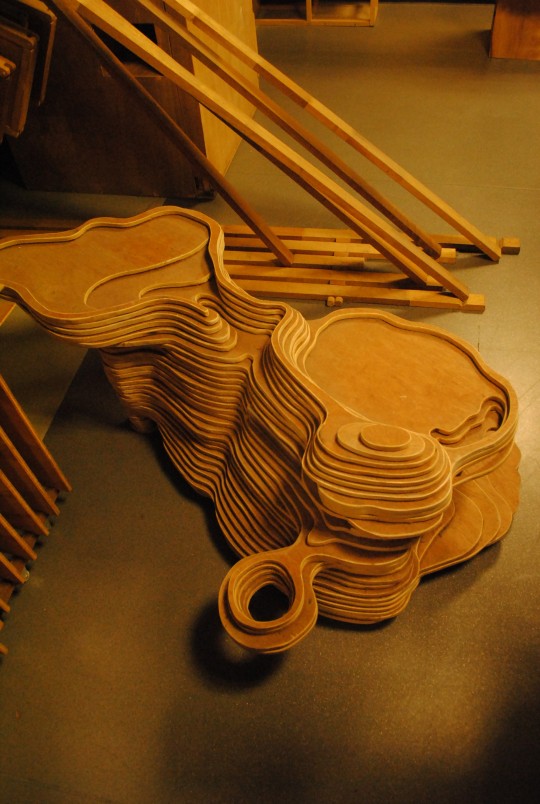
#roseandsummer#national university of singapore#department of architecture#architectural mockup#singapore
0 notes
Text
I deleted this stupid app from my phone for several reasons. But, I re-downloaded it because I needed to make sure that I'm not imagining RB'S downfall.
#what in the alternative universe#you're telling me we won't be hearing the dutch national anthem this weekend#charles lecrelc#carlos sainz#scuderia ferrari#formula 1#singapore gp 23
9 notes
·
View notes
Text

1 note
·
View note
Text
Accelerated Management Program (AMP) - NUS Business School - Northwest Executive Education
The Accelerated Management Program (AMP) from the NUS Business School Executive Education is a fast-track management program for professionals who want to excel in this dynamic business environment.
https://northwest.education/nus-accelerated-management-program/
#nus-accelerated-program#nus fast track management certification#NUS Associate Management Programme#NUS MANAGEMENT PROGRAM#national-university-of-Singapore#nus amp#executive education#Northwest Executive education
0 notes
Text
"Any good gardener knows what a good de-weeding can do for a vegetable garden. As it turns out, it’s much the same for coral reefs.
Following a volunteer “sea-weeding” program launched in Australia, scientists are witnessing compounding coral recovery both in quantity and diversity, and suggest that this simple method has the power to transform degraded reefs overrun by macroalgae.
In a balanced ecosystem, macroalgae is kept in check by the size and health of corals, but as extreme weather events or coral bleaching causes some sections of reef to die, macroalgae has no other neighbor keeping a check on its spread.
Over a period of three years, the joint Earthwatch Institute program led by James Cook University Senior Research Officer Hillary Smith and Professor David Bourne, also at JCU and the Australian Institute of Marine Science, has organized volunteer citizen scientists to help remove macroalgae at two experimental reef sites.
The results of the first three years of work and study have now been published in the Journal of Applied Ecology, and they show a 600% increase in coral recovery rates.
“It’s just like weeding your garden,” Smith said. “Every time we return, the seaweed is growing back less and less, so this method could provide lasting benefit without requiring endless effort.” ...
The importance of the study, Smith details, is that a lot of reef recovery efforts globally are powered by expensive, high-tech, and experimental solutions. The study hoped to show that manual de-weeding was just as effective, and thereby encourage organizations or nations that lack the tech or funding of a country like Australia to pursue sea-weeding as a way of protecting their corals.
“We have yet to see a plateau in coral growth within these plots at Magnetic Island, which is characterized as one of the degraded reefs on the Great Barrier Reef,” Smith said. “We also found an increase in coral diversity, so this method is benefitting a wide range of different coral types.”
Smith said her team are now scoping other locations where the sea-weeding technique could be useful, including the Whitsunday Islands, which are home to a different species of predominant seaweed.
They also want to employ them in French Polynesia, Indonesia, and even Singapore, where experts have identified out-of-control macroalgae spread along coral reefs."
-via Good News Network, September 19, 2023
#algae#seaweed#coral#coral reef#great barrier reef#australia#biodiversity#ecosystem restoration#ecosystem#good news#hope#hope posting
4K notes
·
View notes
Text
ATLA Modern AU: Avatar Edition
This is going to be a slightly different post. I don't think people ever consider the past Avatars in an AU set in a modern setting. Where do you think they would come from, if they had IRL nationalities?
For sake of simplicity, let's say the AU takes place in the United States, since most ATLA Modern AU fics I've read take place there, mostly in the San Francisco Bay Area. We could also use NYC as the setting, since Republic City is roughly based on 1920's Manhattan. I think this task would be much easier if we consider the real-life influences for each of the four nations. I'll be using this post as a reference for these influences.
For example, the Air Nomads are based off of Tibetan Buddhists with some Nepalese and Bhutanese influences, so it would be pretty obvious to make Aang Tibetan in a Modern AU. The same would also go for Yangchen, although I would personally prefer Bhutanese or Sikkimese Yangchen because the Western Air Temple (I'm not talking about the episode) is inspired by Bhutanese cliffside temples. Another option would be making both Aang and Yangchen part of a Tibetan diaspora living in India. Kyoshi, being half-Air Nomad, would also be of Tibetan ancestry.
The Fire Nation is inspired by a combination of Chinese and Japanese cultures, while Ember Island being inspired by Southeast Asian, mostly Thai and Cambodian culture. In a Modern AU, I can see Roku being Thai, while Wan and Szeto would most likely be Chinese, Szeto is from Hong Kong/Macau. I also have a particular desire for Korean Wan, for no other reason than the fact that his VA, Steven Yeun, is Korean. I also wouldn't mind Wan being part of a Chinese diaspora from Malaysia or Singapore.
The Earth Kingdom, being the largest and most diverse of the four nations, is inspired by many Chinese dynasties, various ethnic minority groups in China, and even other Asian cultures altogether. However, we'll be paying attention to one specific cultural influence in Kyoshi's appearance: Heian/Edo Japan. She wears samurai gear and kabuki makeup. How in the name of the Moon Spirit am I not supposed to make Kyoshi Japanese (half-Japanese, anyway)? Kyoshi Island, formerly known as Yokoya, is literally ATLA's equivalent to Japan in the real world. There are even Ainu influences in Kyoshi Island, what with the clothing of the people in Suki's village.
The last nation is the Water Tribes, and the last two Avatars left are Kuruk and Korra. Now, the Water Tribes actually have a more diverse range of cultural influences than what we might expect. According to both @atlaculture and @kkachi95, the SWT is based on Inuit, Yupik and other First Nation peoples, with some Polynesian influences as well. The NWT, in addition to these influences, is also influenced by Mongolian and Siberian peoples. Since Kuruk is from the NWT, in a Modern AU, he would probably be Siberian, mostly Yakut, but I wouldn't mind Mongolian Kuruk either. For Korra, since she is half-NWT and half-SWT, I think she would be mixed like Kyoshi, except Korra would probably be half-Inuit, half-Yupik. I also want Kuruk and Korra to be part of a Mongolian or Central Asian diaspora living in Russia (I'll admit, I'm only saying this because I really want them to speak Russian), but that probably wouldn't work due to the differences in their cultures in-universe.
I have an idea for a Modern AU involving the Avatars, as well as their backstories for said AU, but that's for another time. For now, I turn this question over to you guys, and I want to know your thoughts on my nationality headcanons.
#atla#atla modern au#past avatars#aang#yangchen#roku#wan#szeto#kyoshi#kuruk#korra#atla headcanons#mah rambles#imagine this
46 notes
·
View notes
Text
Broadway Divas Tournament: 2A
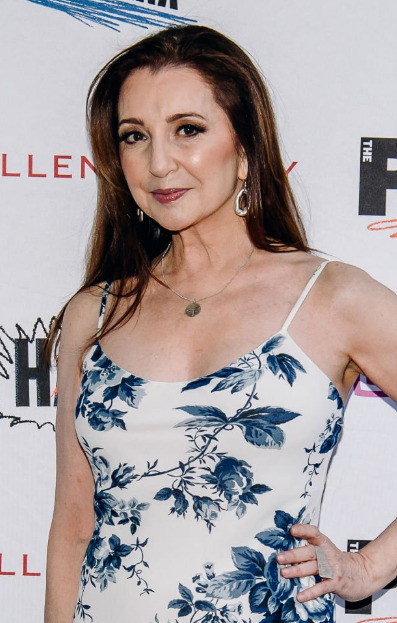
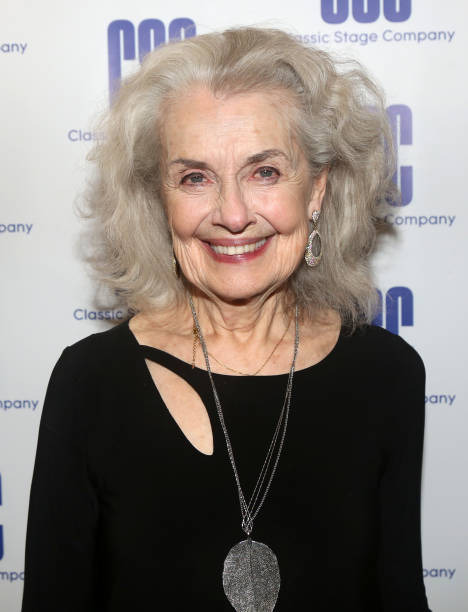
Donna Murphy (1959)
“DONNA MURPHY (Anna) received the 1996 Tony Award, as well as Drama Desk and Outer Critics Circle nominations for her performance in The King and I. She also received the 1994 Tony and Drama Desk Awards for her portrayal of Fosca in Stephen Sondheim and James Lapine’s Passion. Last summer she was featured as Dorothy Trowbridge in Mr. Lapine’s Twelve Dreams at Lincoln Center (Drama Desk nomination). Other Broadway Credits include: Edwin Drood in The Mystery of Edwin Drood, The Human Comedy, and They’re Playing Our Song. Off-B’way: The Whore in Michael John LaChuisa’s Hello Again (Drama Desk nom.), Rose in Song of Singapore (Drama Desk, Outer Critics Circle noms.), Hey Love; The Songs of Mary Rodgers, Privates on Parade, Showing Off, Birds of Paradise, A…My Name is Alice, Little Shop of Horrors. Regional work includes Miss Julie (McCarter), Pal Joey (Huntington), Williamstown, Portland Shage Co. and Goodspeed. She made her feature film debut in Jade, and co-stared (sp) in “Someone Had to Be Benny” for HBO. Other TV includes: Francesa Cross on Stephen Bocho’s “Murder One,” “Law & Order,” “A Table at Ciro’s” (PBS Great Performances), “Another World” and the American Playhouse Production of Passion. Ms. Murphy can be heard on the original cast recordings of Passion (Grammy Award), and Hello Again, and is featured on Leonard Bernstein’s New York on Electra/Noneshuch.” – Playbill bio from The King and I, December 1996.
Mary Beth Peil (1940)
"MARY BETH PEIL (Anna Leonowens), before joining the 1982 Los Angeles production of The King and I, received national acclaim for her television portrayal of Alma Winemiller in Lee Hoiby's opera Summer and Smoke (based on the Tennessee Williams play), produced by PBS and the Chicago Opera Theatre. As a member of New York's Theatre for a New Audience she has apperaed in many productions of Shakespeare. A Graduate of Northwestern University and a First Prize winner of the Metropolitian Opera Auditions, Mary Beth has been featured in opera and musical theatre with such companies as The Metropolitan Opera National Company, the New York City Opera, the Lake George Opera and the Minnesota Opera. She has appeared as soloist with the New York Philharmonic, Honolulu Symphony, Buffalo Philharmonic, the New York Young Concert Artists and the Cincinnati Area Artists Series. Favorite musical theatre roles that she has performed include Rosabella in Most Happy Fella, Magnolia in Show Boat and Kate in Kiss Me, Kate." - Playbill bio from The King and I, March, 1985.
NEW PROPAGANDA AND MEDIA UNDER CUT: ALL POLLS HERE
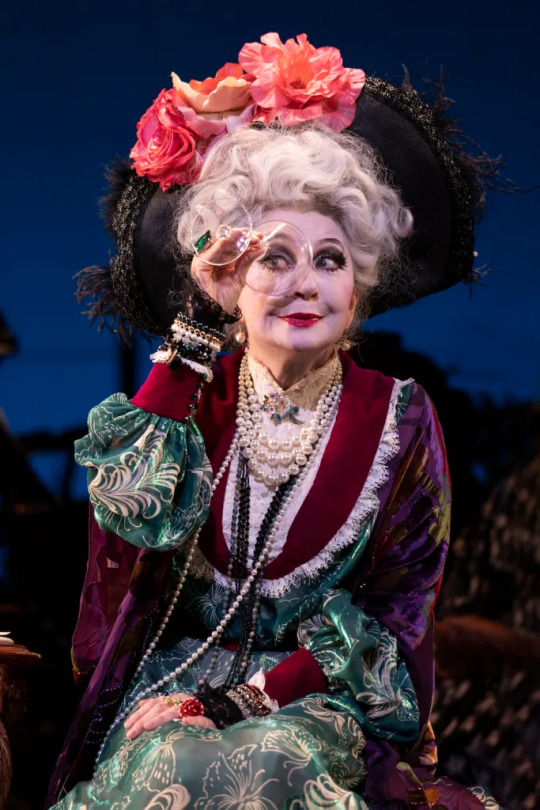
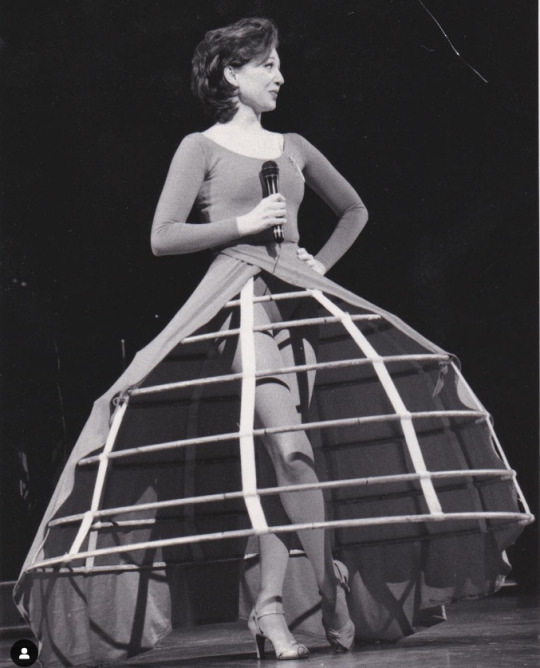

youtube
"We have Donna Murphy as Dolly. We have Donna Murphy as Aurelia. What are we doing to get Donna Murphy in a Mame revival so she can hit the Jerry Herman trifecta? I need this woman back on a stage immediately and genuinely, I cannot tell you how much money I'd be realistically willing to shell out. And on a more personal note? What do I have to do to get Donna Murphy to look at me like she wants to devour me whole? The things I want to do to this woman... She has chemistry with every single person she crosses paths with. I need her carnally."
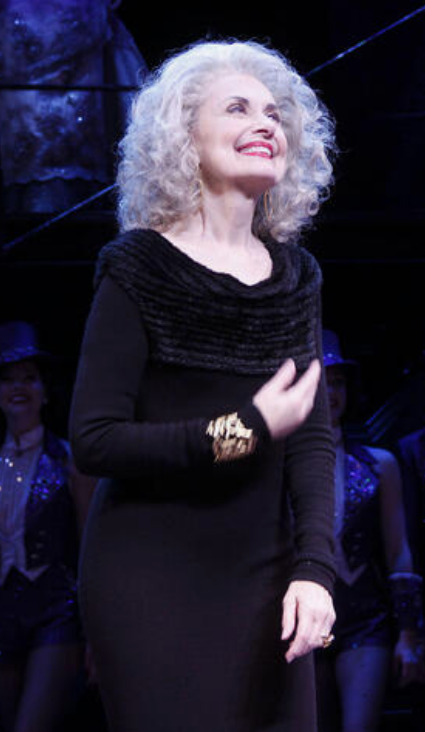
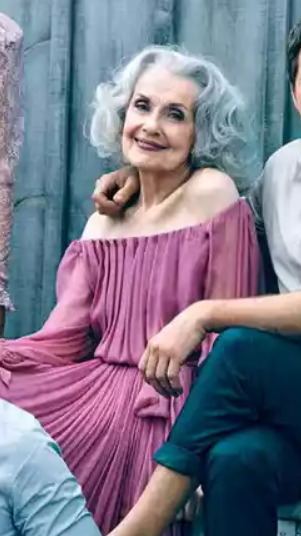

youtube
"Mary Beth Peil's hair deserves a Tony Award of its own. She started going grey almost twenty years ago and never looked back. A grey-haired octogenarian who's actively out here being hot and sexy and showing skin is quite possible one of the hottest things in the world. Let me reiterate: I want to fuck this old woman."
#broadwaydivastournament#broadway#broadway divas#tournament poll#musical theatre#donna murphy#mary beth peil#round 2a
24 notes
·
View notes
Text

Fabricating atomically-precise quantum antidots via vacancy self-assembly
National University of Singapore (NUS) scientists demonstrated a conceptual breakthrough by fabricating atomically precise quantum antidots (QAD) using self-assembled single vacancies (SVs) in a two-dimensional (2D) transition metal dichalcogenide (TMD).
Quantum dots confine electrons on a nanoscale level. In contrast, an antidot refers to a region characterized by a potential hill that repels electrons. By strategically introducing antidot patterns ("voids") into carefully designed antidot lattices, intriguing artificial structures emerge.
These structures exhibit periodic potential modulation to change 2D electron behavior, leading to novel transport properties and unique quantum phenomena. As the trend towards miniaturized devices continue, it is important to accurately control the size and spacing of each antidot at the atomic level. This control together with resilience to environmental perturbations is crucial to address technological challenges in nanoelectronics.
Read more.
#Materials Science#Science#Quantum antidots#Quantum mechanics#Self assembly#Vacancies#Transition metal dichalcogenides#2D materials#Platinum#Tellurium#National University of Singapore
21 notes
·
View notes
Note
Hello hello! I have an ask request for you, if you fancy- Please reblog/ repost your favourite fic or art of yours, or one that you're proud of and let us know why 🙏
thank you so much for this interesting question! i have a lot of favourites, so it was hard to pick, but i'll talk about this one:

The caption for this one was: 'Father had an empire / Stretched down from the heavens / To the depths of hell… / Now those days are gone, / Now you have the heavens, / All that lies beyond, / And all the hope I claim / Since leaving me undone. / You have my hands — forgive me. / You are your father’s son.'
This is one of my favourites because I love digging into the tug-of-war that goes on between Arthur and Alfred so much—between being bound together as father and son (and the moments of sentiment and tenderness that did exist amidst their dysfunctional relationship), king and crown prince—and the sort of Titanomachy vibe of being rivals. Titanomachy because well, that's the story of the old gods being overthrown by the new generation of gods in a war to decide who would have dominion over the universe. And that's very symbolic of their relationship, especially after 1945 which really hammers in the changing of the guard. Alfred doesn't quite slay his old man (unlike how some other older nations might have)...but it's a real generational change. A real relinquishment of power that wasn't without some prideful bitterness and scorn on Arthur's part, inasmuch as Arthur always favoured Alfred amongst his children, and begged for Alfred's help during the darkest days of WWII.
One thing I quite enjoyed was redesigning the back of Alfred's jacket from canon—instead of the US Army Air Force jacket, this is a Navy G1 flight jacket, because I headcanon Alfred as a naval aviator during WWII in the Pacific. The USS Yorktown was named after the Battle of Yorktown during the American Revolution (as most of you know)—and was a real aircraft carrier that played a pretty crucial role in several pivotal battles like Coral Sea and Midway against the Imperial Japanese Navy. It felt very apt, because Lord Father (tm) himself rose to power as a maritime empire—and here is Alfred, marrying sea and air power to seize the very power of the sun (stars produce light and heat through nuclear reactions after all).
After all, the boast of global British seapower decisively sank underneath the waves at Singapore in 1941 with the destruction of the Repulse and Prince of Wales at the hands of the Japanese. Alfred doesn’t have a title but...in spirit, that’s kind of who he is to Arthur. His heir. There’s some irony going on with Arthur’s deliverance being him. Composition-wise, I had fun with putting Arthur next to Alfred—but in the shadow— the sun sets on the British Empire after all, but at the end of the day, it's the crown prince growing out of his father's shadow and stepping into his shoes. Yes, I am a bit heavy-handed 😂 but all the same—I absolutely love drawing Arthur and Alfred together, because there’s so much to depict with the competing and fascinating strands making up their dynamic.
#hetalia#hws america#hws england#rainbowfruitpastilles#lord father and the crown prince#(or)#garbagedad and trashson
206 notes
·
View notes
Text
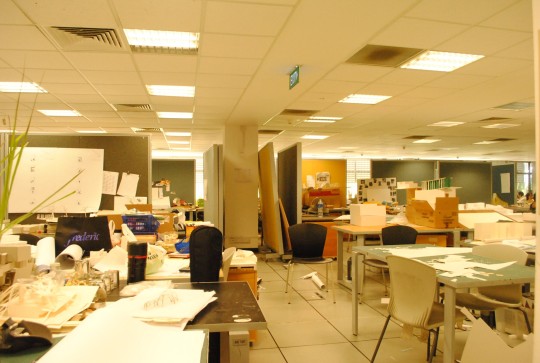
#roseandsummer#national university of singapore#department of architecture#architecture studio#singapore
0 notes
Text
To fully grasp the current situation in San Francisco, where venture capitalists are trying to take control of City Hall, you must listen to Balaji Srinivasan. Before you do, steel yourself for what’s to come: A normal person could easily mistake his rambling train wrecks of thought for a crackpot’s ravings, but influential Silicon Valley billionaires regard him as a genius.
“Balaji has the highest rate of output per minute of good new ideas of anybody I’ve ever met,” wrote Marc Andreessen, co-founder of the V.C. firm Andreessen-Horowitz, in a blurb for Balaji’s 2022 book, The Network State: How to Start a New Country. The book outlines a plan for tech plutocrats to exit democracy and establish new sovereign territories. I mentioned Balaji’s ideas in two previous stories about Network State–related efforts in California—a proposed tech colony called California Forever and the tech-funded campaign to capture San Francisco’s government.
Balaji, a 43-year-old Long Island native who goes by his first name, has a solid Valley pedigree: He earned multiple degrees from Stanford University, founded multiple startups, became a partner at Andreessen-Horowitz and then served as chief technology officer at Coinbase. He is also the leader of a cultish and increasingly strident neo-reactionary tech political movement that sees American democracy as an enemy. In 2013, a New York Times story headlined “Silicon Valley Roused by Secession Call” described a speech in which he “told a group of young entrepreneurs that the United States had become ‘the Microsoft of nations’: outdated and obsolescent.”
“The speech won roars from the audience at Y Combinator, a leading start-up incubator,” reported the Times. Balaji paints a bleak picture of a dystopian future in a U.S. in chaos and decline, but his prophecies sometimes fall short. Last year, he lost $1 million in a public bet after wrongly predicting a massive surge in the price of Bitcoin.
Still, his appetite for autocracy is bottomless. Last October, Balaji hosted the first-ever Network State Conference. Garry Tan—the current Y Combinator CEO who’s attempting to spearhead a political takeover of San Francisco—participated in an interview with Balaji and cast the effort as part of the Network State movement. Tan, who made headlines in January after tweeting “die slow motherfuckers” at local progressive politicians, frames his campaign as an experiment in “moderate” politics. But in a podcast interview one month before the conference, Balaji laid out a more disturbing and extreme vision.
“What I’m really calling for is something like tech Zionism,” he said, after comparing his movement to those started by the biblical Abraham, Jesus Christ, Joseph Smith (founder of Mormonism), Theodor Herzl (“spiritual father” of the state of Israel), and Lee Kuan Yew (former authoritarian ruler of Singapore). Balaji then revealed his shocking ideas for a tech-governed city where citizens loyal to tech companies would form a new political tribe clad in gray t-shirts. “And if you see another Gray on the street … you do the nod,” he said, during a four-hour talk on the Moment of Zen podcast. “You’re a fellow Gray.”
The Grays’ shirts would feature “Bitcoin or Elon or other kinds of logos … Y Combinator is a good one for the city of San Francisco in particular.” Grays would also receive special ID cards providing access to exclusive, Gray-controlled sectors of the city. In addition, the Grays would make an alliance with the police department, funding weekly “policeman’s banquets” to win them over.
“Grays should embrace the police, okay? All-in on the police,” said Srinivasan. “What does that mean? That’s, as I said, banquets. That means every policeman’s son, daughter, wife, cousin, you know, sibling, whatever, should get a job at a tech company in security.”
@karpad @quasi-normalcy @ubernegro
11 notes
·
View notes
Text

A Male Saiga Antelope in Russia's Black Land National Park. These highly social antelope live in herds. Photograph By Valeriy Malee/Nature Picture Library
This Floppy-Nosed Antelope Was Nearly Gone. 20 Years Later, It’s Thriving.
Less than a decade ago, more than half of the world’s saiga antelope were lost to a mysterious disease. Its comeback is a rare and phenomenal conservation success.
— By Jason Bittel | December 14, 2023
Just two decades ago, it seemed as if we might need to write a eulogy for the saiga antelope.
Cut down by widespread poaching and waves of disease, by 2003, just 6 percent of the floppy-nosed ungulates remained in Kazakhstan, Mongolia, Russia, and Uzbekistan.
But today, scientists are rejoicing at the saiga’s unlikely rebound.
There are now 1.9 million saiga antelope across Eurasia, according to the most recent estimates released this week. So many saiga, in fact, that the International Union for Conservation of Nature is upgrading the Red List status for the species from critically endangered to near threatened.
“There's a lot of conservation doom and gloom, and there isn't very much attention paid to conservation successes,” says E.J. Milner-Gulland, a conservation scientist at the University of Oxford and co-founder of the U.K-based Saiga Conservation Alliance. “It’s quite a vindication of 20 years of hard work by lots of people.”
To get a sense of just how far this species has come, in 2015, more than half of the worldwide population of saiga antelope were lost to a mysterious blood disease.
“This is phenomenal news,” says Joel Berger, an ecologist at Colorado State University and a senior scientist at the Wildlife Conservation Society, in an email.
“At a time when so many species and populations are in deep swan dives, to witness the recovery of saiga—a species deserving of more recognition in its own right—is something we all need to celebrate,” he says.
The Saiga’s Downward Spiral
Those who have been paying attention to the saiga’s saga know that it’s been a wild ride.
“Twenty years ago, it had the fastest increase in threat status of any mammal,” says Milner-Gulland. “The population had plummeted by more than 90 percent over a really short time of a few years, so it went straight in at critically endangered.”
As for what happened, Milner-Gulland explains that the saiga’s downfall can be attributed to several factors. For starters, saiga horn has great value in China, Singapore, Vietnam, and Malaysia as a component in traditional medicine. And this demand, coupled with the breakup of the Soviet Union, led to a dramatic rise in hunting.
It’s a Symbol of the Wild Steppe, of Independence and Freedom.
— E.J. Milner-Gulland, Conservation Scientist at the University of Oxford
“The economies of these countries basically collapsed,” she says. “And they were living in very harsh conditions on the steppe. So they turned to poaching.”
Fencing along the border between Kazakhstan and Uzbekistan also put a barrier in the middle of the saiga’s migratory route, while infrastructure development cut into saiga habitat. Finally, an unknown trigger turned a naturally occurring microbe in the saiga’s characteristic nose into a virulent pathogen, leading to the mass die-offs.
It’s for all these reasons that the IUCN has chosen not to de-list the saiga completely.
“The near threatened category is right for the saiga, because we know that at any time, we could just get large numbers of them dropping dead again,” says Milner-Gulland. “They are very vulnerable.”
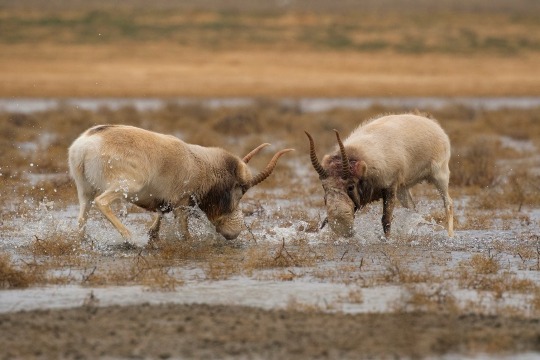
Male Saiga Antelope Battle in Black Lands National Park. Males and their horns are a specific target of poachers. Photograph By Valeriy Malee/Nature Picture Library
A Path to Recovery
Just as the threats to the saiga were multi-faceted, so too have been the efforts to protect the species, which are important seed dispersers and grazers that contribute to plant biodiversity.
For instance, an international collaboration between countries where saigas roam, countries that traditionally consume saiga products, and other stakeholder nations, including the United States, led to a memorandum of understanding in 2006 to conserve the species, restore its habitat, and restrict harvest to a sustainable level.
For its part, Kazakhstan’s government focused on stronger anti-poaching measures, including law enforcement to prevent saiga hunting. The Saiga Conservation Alliance supplied financing for gasoline, uniforms, motorbikes, and shelters for those rangers, who live in the harsh, windswept grasslands. Customs agents also improved detection of saiga products leaving the country as part of the illicit wildlife trade. Lastly, the country designated multiple protected areas totaling more than 12 million acres of saiga antelope habitat.
Now that economic conditions have leveled out and local people don’t have to choose between their own survival and saving saiga, there has also been a dramatic shift in support for the species.
“The thing about saiga is the local people really love it,” says Milner-Gulland. “It’s a symbol of the wild steppe, of independence and freedom.”
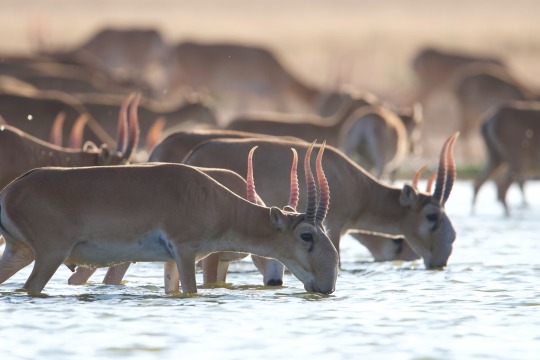
Saiga (Drinking on Southern Russia's Astrakhan Steppe) can migrate up to 600 miles over summer and winter. Photograph By Valeriy Malee/Nature Picture Library
#Animals 🦓 🦒 🐘#Floppy Nosed Antelope#Kazakhstan 🇰🇿 | Mongolia 🇲🇳 | Russia 🇷🇺 | Uzbekistan 🇺🇿#University of Oxford#Saiga Antelope#China 🇨🇳 | Singapore 🇸🇬 | Vietnam 🇻🇳 | Malaysia 🇲🇾#E.J. Milner-Gulland | Conservation Scientist | University of Oxford
36 notes
·
View notes
Text
trigger warning: This au is based off the godzilla universe (specifically minus one). I focus on the aftermath of graphic disaster scenarios, so I suggest to skip if you're not in the mood!
He stumbles in the second act.
Prisms of light scatter in Wenhan’s peripherals as he stares down at the stage floor. Red and gold pom poms and strings of glass beads hit against rouged cheeks, gouging out small trails the way careless brushes of fingertips do. The sweat curtaining his skin becomes seamless pearls blending into white face paint.
The orchestra continues on, drowning out murmurs in the audience. They’re trained to recover from falls and mistakes like any other performer. Punishment from directors and sponsors is always more severe than a split second of humiliation. He could be up and into the next sequence within a heartbeat.
But he’d caught himself on stinging hands and knees. Motionless until the throb of the fall is a numb pulse and his tongue curls dry to the roof of his mouth. Frozen in place as ribbon dancers and masked figures in loose hanfu move around him. The slightest tremor caresses his open palms.
A guttural screech from a violin in the pit raises Wenhan’s head. Stage lights flood his eyes as he searches blindly in the audience. Dancers to his left hit the floor as the stage sways with a thundering crack and shrieks puncture the air from all sides. A layer of white dust rains down against a fleeing crowd, blanketing colorful costumes in splintered fragments. The ceiling above the audience collapses first, throwing up toxic clouds. Wenhan stumbles to his feet as his lungs shudder to breathe, pressing a sleeve to his mouth and nose as he shoves hesitant crew to the emergency exit backstage.
Wenhan watches as a beam of overhead lights crashes down onto fleeing bodies. Snapped metal groans above from the weight of the collapsed ceiling. Shattered glass pops under his feet as he stumbles back to escape the gush of water from gutted pipes in the walls and stripped live wire. The low whine of twisted metal above ends with a sudden snap. The debris in his throat chokes him more than the pain of his legs pinned beneath steel beams.
He stares up at the open sky now painted in smoke and filled with the clamor of emergency sirens. A shaking hand grasps weakly at his shoulder, and he doesn’t recognize the face smeared in blood and dust to his left. A body smashed beneath slates of plaster and metal.
Wenhan stares up at the sky, holding that hand in his until fingers no longer tremble and everything is still.
-
February 23, 2008
The WPC (West Pacific Coalition) was formally established after an unprecedented attack killed thousands in Shanghai during lunar new year celebrations. This international security effort is recognized by the governing bodies of China, Singapore, Japan, South Korea, Taiwan, Indonesia, and the Philippines. Curated teams of military personnel and emergency responders are deployed based on high risk scenarios regardless of nationality to prevent further loss of human life and destabilization of global society.
–
Tiles bleed cold underneath knees tucked in front of an empty hole in the wall meant to house a cross. Two weeks ago, the wood had been needed to repair the roof due to a small quake’s aftershocks. Now, no one wanted to make time to properly dress the space for anyone to pray, or mourn, or curse. Rebuilding Busan’s port communities took every willing pair of military hands. Any spare unwilling ones were busy burying the dead or clinging to a warm body, leaving no room to beg God for favors.
Yet, it’s a quiet space, even if mostly abandoned. Away from shuffling bodies of overworked soldiers and unfamiliar faces.
Taeil stares down at the spray of grey and white now dusting his army fatigues.
“Does that work?”
The man perched over him reminds Taeil of a bird. Every feature of his is sharp. The way each angle meets the next throws shadows under dark lashes and glaring cheekbones. Simultaneously jarring and soft. The way you wouldn’t expect a row of feathers next to talons. Even the accented Korean on the other man’s tongue feels pointed. Calculated. Almost too precise to be comfortable.
“What…” Before Taeil realizes his reply is more of an exhale than an answer. “--does what work?”
The other man pauses, but the amused twitch of his lips lingers. He mirrors Taeil’s kneel, leaning a little awkwardly to the left instead of straight. His right leg isn’t fully tucked under his thigh. The way he presses his hands together is enunciated, as if he’s trying to overcompensate for his role in a silent film. He crosses himself, gesturing wordlessly to the sky.
Stunned silence is the weight on Taeil’s bottom lip as his mouth opens, before the gnashing of teeth beheads words dying to form. His eyes fall on the burning end of the other’s cigarette, as if he’s watching the dying ember of his own annoyance. Taeil exhales through his nose and nods his head at the smoke. “--does that work for you?”
“Only when I don’t have anything better to put in my mouth.”
“Asshole.”
“Close, but it wouldn't be my first choice.”
Taeil starts to stand, tempted to shoulder check the stranger on his way up. Rationality was never his first choice. He was always chastised for emotionally charged decisions during training. Prolonging this conversation would likely end with his fists bruised and both of them bloody. It was the first week in this base. A reputation built on nothing couldn’t be used as leverage, no matter how good he thinks that sharp nose would look broken.
“It was an honest question. Do you ever get what you ask for?”
Curled fists open and close at his sides before he turns towards the door without answering. A much larger figure fills the frame, blocking Taeil’s exit. Dark eyes glance over a familiar wrinkled face. Taeil’s posture goes rigid. He bows his head to the senior officer.
“Ah, I see you two met.” There’s the threat of a reprimanding edge, though it seems directed at the soldier behind Taeil. “Private Yoo, this is Private Li, a pilot from Shanghai.”
Private Li was now standing as if the casual collapse of limbs on the floor had been snapped upward by a pulled string. He still leans into his left side, as if he can’t wait to drop the salute once no one’s watching. Both men meet eyes, but this time neither of them are smiling.
“Your new partner.”
–
Wenhan tears away flyers from the front door of the barracks. The images are grainy pixels enlarged sloppily to fit its new frame of cheap computer paper. But the painted features of the subject are clear enough even from a distance.
“What a waste. You look so pretty, ge–”
Wenhan tosses shreds of paper at the face crinkled with laughter to his left. The mandarin that rolls off his tongue is an effortless shift.
“Then you can tape it together and jack off later.”
“Shit, hey– hey, hey,” Hong shields his face and steps out of the way of an elbow aimed at his gut. “It wasn’t me. You know who thinks pulling this shit is funny.”
Even if the construction of this military camp had been congested to a rural corner in the city, their barracks only had four bunks. Compared to other soldiers forced to sweat and curse during the summer in a room with 18 other men.
Wenhan’s busy emptying a shelf of one of his roommates, tossing the best snack wrappers a guaranteed death payroll could buy onto the empty bunk next to it.
“You met him, right? Did you ask why he was transferred here? What's he like?”
What comes to mind first is the silhouette of a stranger’s back. One man on his knees in an empty room already abandoned by the hands that built it.
Wenhan blinks. A dimple forms between his brows. He smooths a thumb over his forehead as if it would iron out the mental crease.
“Ask him yourself.”
Wenhan gains the uncomfortable weight of Hong’s arm across his shoulders and leans away from the warm breath on the back of his ear. Hong doesn’t even whisper, confident in the disguise of their native language.
“I heard he volunteered for a suicide mission.”
Wenhan pauses. Considering superiors kept information to themselves until mistakes rose the death toll. It wasn’t so unbelievable they would consider going on the offensive before signs of an attack in the east sea. But Hong was overzealous, often inflating the truth with his desire for grandeur.
“I also heard he killed someone, so it was either that, or prison time.”
The mandarin comes from neither of the men, but from behind. Fluent as if it flowed from the memory of a native. He shoves his shoulder into Hong, watching the other dramatically collapse as if he’d sniped him. Taeil stands in the open doorway, wearing neither a smile or a frown. Hong still carries enough shame to apologize, while Wenhan feels the corners of his lips curve up.
Taeil doesn’t seem offended enough to start a fight as he walks further in, prompting Hong to throw an arm around his shoulders and continue rattling off in Mandarin.
“It’s always a suicide mission. Even if it’s true– just makes you stupid like the rest of us.”
Wenhan starts to roll up one hem of his pants as Hong interrogates the other soldier. He presses fingertips into skin, where his kneecap meets the solid metal of his calf, massaging tiny circles into the joint.
Taeil’s attention lingers on the flash of silver jutting out where one would expect to see flesh. Wenhan could recognize pity in anyone's face. But the look Taeil casts at his prosthetic is devoid of surprise or even embarrassment for having been caught staring. Maybe more like a stranger in a museum. One who could only be voyeur to a past they could never live inside of or understand. Every glance strangely intense despite the impossible distance.
But without pity.
“Pretty sexy, isn’t it.” Wenhan kicks his heel against the solid concrete floor. “My eyes are up here.”
“I was looking at your third eye.”
Taeil catches the extra set of blankets Wenhan throws without missing a beat.
–
No one enjoys the nightwatch at Taejongdae.
Wenhan prefers the weight of briny air on his tongue to the suffocating anticipation of everyone at the military base. He’s empty handed for his shift, with nothing but the weight of a buzzing comm system strapped to his side and the soft glow of the lighthouse glancing over dark waters below. Weapons wouldn’t save anyone on the ground. Time was all they ever had as a counter strike.
He walks the length of the highest cliff’s paved trail, roped in by steel fences peppered with rust. Other soldiers stationed on the southern tip of the city are wandering shadows in the night. There’s no one close enough to hear him as he hums the beginning of a melancholic note. No one around to complain as his voice rises in volume, competing against the claw of the ocean’s wind and lick of waves against carved rocks.
Then he’s twisting on his heel, grasping the butterfly knife hidden at his side. Golden light from the silent carousel of the lighthouse spills over Taeil’s face, lighting curious dark eyes and outlining the soft slopes of his cheeks. His open palms face outward to Wenhan in surrender.
“Are you a fucking idiot?”
Taeil steps closer, dropping his hands as he falls into Wenhan’s retreating pace. The only reply is the soft tone of Taeil’s singing, off key and unsure as he repeats the last line of the song Wenhan hadn’t finished.
“If you can sing like that, why are you out here?”
Wenhan carries on in silence. The lighthouse careens over black sea water.
“I wasn’t asking god for something.”
He turns back to Taeil. The abrupt stop has them breaths apart. He can see the dark circles pressed under both the man’s eyes. Chapped lips sealed thin. A small mole marks the corner of a tense mouth.
“I was cursing him, actually. For giving me the grim reaper as a partner.”
The tense curl of Taeil’s mouth softens. The coil of anticipation is gone, as if a switch had been flipped. The entire man’s body relaxes. On the cusp of revealing something more, but pulling back. He sighs like a tired old dog and raises his hands to the heavens.
It’s not the first time other soldiers warned new recruits about Wenhan’s reputation as an indirect death sentence. Some would even request to transfer before he’d meet them face to face. No one wanted to disprove potential mythology.
“Idiot.” He barely speaks above the sound of the ocean. But Taeil hears him, kicking up rocks and dust at Wenhan’s heels as they continue up the slope. He sings in broken Mandarin at Wenhan's back.
But his eyes are trained on glints of silver and white bobbing in the black churn. The glow of the lighthouse sculpts the distant shapes into what looks like overturned buoys. He stands still, staring into the sea as if he could will away the sight of dead fish rising to the surface. Taeil calls his name, but the roar of white noise drowns out any thought or instinct.
His comm device revives with a series of orders in Korean, Mandarin, Tagalog. Sighting along Taejongdae. Prepare for immediate impact.
Wenhan’s collar digs into his neck as Taeil forces him into a run. White dead bellies of fish are swallowed by a rising dark form. The lighthouse fights to glow around the massive shadow, illuminating pulsing coils of scarred flesh. An aching roar ruptures the air before the tower collapses into a wave of dust and shattered stone. The ground becomes sand beneath their steps seconds after warning alarms fill the air.
Taeil shoves Wenhan forward with desperate violence as the cliff beneath their steps crumbles. He turns back once his feet meet the solid safety of grass and arms of trees, lunging to grasp at Taeil falling into empty air. Fingers lock around Taeil’s wrist. Wenhan bites into his tongue, tasting the rush of blood and feeling the hot burn of torn muscle as he fights against the other man’s dead weight hanging over the cliff.
Taeil’s fingernails carve bloody trails down wenhan’s arm as he struggles for a strong grip. His body drags against the ground, slowly inching over the edge.
Not again.
His arms are shaking, tips of fingers pulsing numb.
Not again.
#[ here's 1k+ of something no one asked for#[ in my head they DO survive because I imagine the radioactive poisoning in the movie also impacts physical capabilities#[ if im writing again its probably because i watched a good movie or read a good book#[ hi if you're in my tags ill always write something for you : )
12 notes
·
View notes